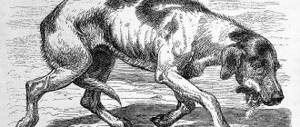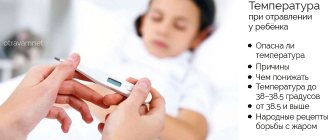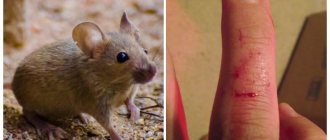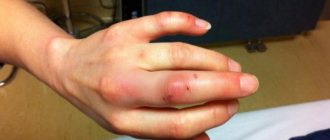Dogs are inquisitive and fearless, every walk is a lot of discoveries for them, and they treat the world with trust, no matter how cruel it may be at times.
Therefore, unfortunately, our pets often find themselves victims of human negligence or even criminal intent. They are defenseless against stupidity and meanness, which means that owners need to be able to help their pets in life-threatening situations. Rat poisoning is one of them. Rat poison is produced in a form that is not the most attractive to dogs, because it is designed for rodents, and therefore most often has a grain base (although it also comes in the form of paste, gels, granules or briquettes). And the deadly dose of rat poison for dogs, especially large breeds, is quite large - such an amount of the drug is rarely used to bait rats, so dogs usually receive a mild or moderate degree of poisoning, unless we are talking about poisons of increased toxicity. But, nevertheless, although such poisonings are rare (about one tenth of a percent of poisonings in dogs occur in these cases), they still occur: after all, dogs are curious, like three-year-old children, and can eat bait not because it looks appetizing, but simply out of interest (especially since meat flavorings are often used in preparations for rats). Dogs are also hunters, and some of them consider the rat as prey, so often it is the poisoned animal that causes intoxication in the dog.
Most often, trouble awaits a dog not while walking in the park or on city streets, but when inspecting its own yard or surrounding areas: if neighbors or utility workers poisoned rats, your pet may eat the affected rodent or poison laid out near trash cans, basements, and other places. places that are attractive to rats. Therefore, owners need to be careful and not let the dog “run around” unattended in the courtyards of high-rise buildings or on the street in the private sector: this is primarily unsafe for the dog itself. However, alas, no one is safe from inadequate neighbors who poison rats without warning other residents, as well as from dog hunters - deliberate killers who set as their goal the painful destruction of dogs.
This means that owners must be well versed in a dangerous situation and be able to provide emergency assistance to their pets in order to clearly understand what to do if the dog has eaten rat poison.
What is rat poison?
Rat poison is used to kill small rodents. It is used as bait. It has a grain base and is available in the form of paste, granules or ready-made briquettes. It has a pronounced unpleasant odor, but it gives the poison a tempting meaty aroma that attracts many animals.
The risk of a dog eating poisoned bait increases if it is made from meat ingredients. An animal can also become poisoned by eating a rodent that has died from poison. In both cases, toxic substances enter the dog's body and enter the bloodstream through the mucous surface of the stomach. This leads to pathological changes and severe poisoning.
Prevention of poisoning
Rat poisoning in dogs often results in death. It is much easier to avoid contact of your pet with this poison. Below are tips to help with this:
- Walk your dog on a leash and muzzle. This way you will be sure that your pet will not pick up anything from the ground.
- From an early age, teach your dog that eating anything from the ground is prohibited.
- If deratization (destruction of rodents) is planned in the premises where you live, take the dog to another home for a while (to relatives, friends, or board at a veterinary clinic).
- In the village, prohibit your dog from running around barns, cellars, and chicken coops. There she can find a dead, poisoned mouse.
Poisoning with rat poison in dogs leads to severe damage to the internal organs of the animal and, in the absence of medical care, to death. When the first signs of poisoning develop, take your pet to a veterinary clinic. There he will be given first aid, examined and treated.
What is the danger of rat poison for a dog?
Let's look at what dangerous substances are included in rat poison and how they affect the dog's body.
The main components of rat poison are:
- Rodenticides (anticoagulants) . Almost immediately after entering the stomach, these substances penetrate into the bloodstream. Because of this, the formation of proteins that do not have coagulation properties occurs, which causes the cessation of vitamin K synthesis. This means that the blood of the animal, in this case a dog, loses its ability to clot. Massive internal bleeding occurs, provoking the onset of a hemorrhagic stroke.
- Zinc phosphide . It has a detrimental effect on the digestive tract and nervous system. Destroys the mucous surface of the stomach and disrupts vascular reactions.
- Krysid . It is one of the most harmful and toxic poisons for a dog’s body. Causes damage to the central nervous system, severe pulmonary edema and acute heart failure.
The most common rat poisons are rodenticides, and rat poison and zinc phosphide are recommended for use only under the supervision of a rodent exterminator.
Rat poisons with rodenticides include:
- Warfarin;
- Brodifacoum;
- Triphenacin;
- Flocumafen;
- Bromadiolone.
Important! After a dog consumes the listed toxic substances, signs of poisoning appear only after 3-5 days. This is due to the fact that the dog’s body has a certain supply of vitamin K.
So how does rat poison affect dogs? Summarizing the above, we can say that poisoning with rat poison causes in dogs:
- disruption of the production of vitamin K, which is responsible for blood clotting;
- massive internal bleeding;
- serious abnormalities in the functioning of the nervous and cardiac systems.
How to protect your pet from poisoning?
A dog's recovery from rat poison poisoning can take a long time and result in an incomplete return to normal life. To prevent this, it is best to follow all intoxication prevention measures. Recommended:
- From puppyhood, you cannot accustom your pet to eating from the ground.
- If your dog has a habit of picking up food on the street, walk with a muzzle and a leash.
- During planned deratization (if it is carried out at home, in a nursery or other place where animals are kept), take the dog to a new premises.
- Sometimes the treatment is also done in yards, in which case it is better to avoid walking for several days.
- When leaving the city, do not allow the dog near outbuildings, such as a barn, chicken coop, or shed. There you can find a dead rodent.
- There is a similar threat near garbage dumps and landfills.
Now you know how rat poison affects dogs. No one can guarantee safety from poisoning. Toxins can be found in a variety of places, and sometimes those who poison rats do not even think about the fact that the poison is also deadly for other animals. There are also cases of deliberate baiting of dogs. That is why it is important for owners to know how to provide first aid in case of poisoning, how to recognize rat poison and what consequences it can have on the body.
Vivid symptoms of rat poisoning in dogs are quite a serious danger to the life of the animal. Therefore, recognizing the symptoms of such poisoning is a top priority for every owner caring for their pet. You need to know and be able to distinguish not only the clinical signs of intoxication, but also imagine how to provide first aid to a dog before contacting a veterinarian.
Symptoms
Symptoms of rat poison poisoning in a dog can manifest themselves in different ways. It all depends on the type of toxic substances from which the bait is made and the amount of poison eaten.
Puppies are more susceptible to poison, and their symptoms appear faster and more severe. The lethal dosage for them is also less than for an adult dog.
If poisoning occurs after consuming poison containing rodenticides, signs such as:
- bleeding from the nose, gums, or anus;
- temperature increase;
- presence of blood in the urine; pink tint of urine;
- blood when coughing;
- the animal's refusal to eat;
- redness of the whites of the eyes;
- the appearance of shortness of breath and weakness;
- tongue hanging out.
When poisoned with a poison containing ratsid, the following symptoms appear:
- severe vomiting;
- weak pulse;
- lack of urine;
- labored breathing;
- severe cough and shortness of breath (as symptoms of pulmonary edema).
In case of poisoning with a poison containing zinc phosphide, the following symptoms are observed:
- lack of coordination;
- breathing problems;
- strong feeling of thirst;
- drowsiness and lethargy;
- convulsions;
- loose stools;
- loss of consciousness.
Further treatment
After providing emergency care, you must visit a doctor and tell him about all the symptoms and their duration. In a good clinic, a veterinarian will immediately take a blood test to understand what kind of toxin was ingested.
In case of poisoning with anticoagulants, an antidote is administered - vitamin K (Phytomenadione). In therapeutic doses, it has the opposite effect of rodenticide and neutralizes its negative effects. The amount of the required drug is calculated depending on the weight of the dog and the type of poison. That is why, if the poison was in bags, the packaging was preserved, be sure to bring it to the doctor. Unfortunately, in Russia “Phytomenadione” is not available everywhere, so vitamin Kᵌ (Vikasol) can be used. The dosage varies from 0.25 to 5 mg per kg of weight.
The antidote for zinc phosphide is a solution of copper sulfate. Tannin is used to neutralize Rasid. This drug has a broad effect and is used for various types of intoxication; it binds poison in the stomach and helps remove it from the body.
Next, therapy will be aimed at eliminating the symptoms of poisoning. For this purpose:
- sorbents for cleansing the body;
- diuretics and saline laxatives;
- rehydration solutions;
- painkillers.
Separately, the doctor notes the consequences of intoxication; some of the medications will be aimed at maintaining the general condition and restoring individual organs. May be assigned:
- anti-inflammatory drugs;
- corticosteroids;
- antibacterial drugs;
- enzymes;
- heart medications.
In severe cases, the animal is left in the hospital for several days. Sometimes a blood transfusion may be needed. If the damage was not so severe, the specialist will write a prescription and send you home. In the future, you will need to undergo additional examination to determine the presence or absence of complications. For this:
- They give a general blood and urine test. The first diagnoses the condition of the body as a whole, the development of anemia. The second checks the functioning of the kidneys.
- Blood biochemistry determines the quality of functioning of the pancreas, kidneys and liver.
- If an acute lesion is suspected, an ultrasound of the internal organs is performed.
- If heart failure is diagnosed, an ECG and ECHO of the heart are done.
- If a stroke is suspected, an X-ray of the head is prescribed.
The owner should be aware that the bleeding disorder usually lasts for life. It can manifest itself in pallor of the mucous membranes, bleeding gums, and bleeding from injuries.
Video: symptoms of rat poison poisoning in dogs and methods of treatment
First aid
If you notice signs of rat poison in your dog, he should be taken to a veterinarian immediately. But if there is no animal clinic nearby, it is important to provide first aid yourself. This will help the pet survive to the veterinarian.
Important! With timely veterinary care, about 80-90% of dogs recover and the prognosis is favorable. However, you should be aware that repeated poisoning with rat poison can be very dangerous, since animals develop increased susceptibility to it.
First aid measures for dogs poisoned by rodent poison include:
- Induce vomiting. Closer to the root of the tongue you need to put a handful of kitchen salt.
- Gastric lavage. Using a 20 ml syringe, inject clean water into the animal's mouth. And induce vomiting by lightly pressing on the root of the tongue. Water dosage: puppies – 20 ml of water, medium dogs – 40 ml, large dogs – 60 ml.
- Purgation. A children's enema bulb must be filled with water at room temperature (50-100 ml) and inserted into the dog's rectum.
- Reception of sorbent. These drugs cleanse the intestines of poisons and toxins, but they are not easy to give to your dog. If it is a powder, then you should dilute it in water and inject it using a syringe. If the drug is in the form of tablets, then they are crushed and diluted with water. You can use any sorbent found in your home medicine cabinet: Activated carbon, Polysorb, Enterosgel, Polyphepan, Enterosorb.
- Drink plenty of fluids. The pet needs to be soldered. Give water 10 ml every 10 minutes, for small puppies - 5 ml.
Important! If a dog is poisoned by rat poison with rodenticide, then gastric and intestinal lavage cannot be performed! This is due to the fact that such a toxic substance, as mentioned above, can cause internal bleeding. Therefore, it is better to give the animal water and sorbent.
Main types of toxic substances and symptoms of poisoning
A complete list of symptoms of poisoning can only be determined depending on the type of poison that was used to make poison for the rodent. The following types of toxins can be used:
- 1st generation rodenticides;
- 2nd generation rodenticides;
- ratsid;
- vitamin D3;
- zinc phosphide.
Symptoms of a dog being poisoned by a particular group of poisons may vary. It is their determination that will help the veterinarian choose the right antidote and save the animal.
Intoxication with 1st generation rodenticides
Intoxication with 1st generation rodenticides disrupts the dog’s blood clotting process (due to impaired vitamin K synthesis).
Signs of poisoning by this group of substances are as follows:
- thirst;
- frequent urination;
- general weakness;
- decreased appetite;
- bad breath.
Intoxication with 2nd generation rodenticides
In case of poisoning with 2nd generation rodenticides, the same symptoms are observed as with substances of the first group, but with the addition of:
- urinating pink urine (a sign of impaired kidney function);
- redness of the eyes (indicates high blood pressure);
- blood with foam when coughing;
- dark stool of liquid consistency;
- black vomit;
- nosebleeds (as a result of poor blood clotting).
The first thing to appear is blood from the nose. It is this symptom that allows the owner of the animal to suspect poisoning by rat poison. The dark color of stool and vomit is due to the fact that a reaction of gastric juice and blood occurs in the body. The blood coagulates as a result of a reaction with hydrochloric acid and becomes dark in color.
The dog was poisoned by a rat
Ratseed is a very toxic substance, so it is rarely used in practice. Mostly available in gel form. The poison disrupts the normal functioning of the nervous system, leading to pulmonary edema and problems with the cardiovascular system.
The main signs that a dog may have been poisoned by rats:
- cough;
- poor pulse;
- severe vomiting;
- absolute absence of urination.
What not to do?
- It is forbidden to induce vomiting in an animal if more than 4 hours have passed since the toxic substance entered the body. During this time, the poison from the stomach already penetrates the intestinal walls;
- It is forbidden to induce vomiting if the dog has disturbances in the functioning of the nervous system: loss of consciousness, convulsions or paralysis.
- Do not give your pet dairy and fermented milk products, vegetable oil, or eggs. If the poisoning was caused by zinc phosphide, such products will only worsen the situation, since they promote the rapid absorption of toxins into the bloodstream.
Should I contact a veterinarian or can I do it on my own?
If there are signs of poisoning, contacting a veterinarian should be done immediately, as they can be confused with manifestations of diseases associated with blood circulation and blood production. In any case, the veterinarian knows much better than you what to do if the dog has eaten rat poison, will orientate himself faster and will provide professional assistance.
Even if you do not observe all the signs at the same time, but only one or several, it is necessary to urgently contact the clinic, because often the symptoms develop in turn, one after another - you cannot wait for the full picture here, because you can miss precious time, and then it will be too late.
In addition, the doctor will not only make the correct diagnosis, he will provide the most adequate emergency care, giving an antidote to rat poison (antidote), which is always available at the veterinary clinic. He will also prescribe subsequent treatment, because after serious intoxication, the body of the affected animal will need long-term support.
- A course of vitamin K1 injections is prescribed, the duration of which is determined by the initial severity of the condition (from a week to a month) and the type of toxin that caused the poisoning.
- During the first 24 hours, the dog needs a blood or plasma transfusion to replenish its supply of red blood cells and clotting factors.
- If the poisoning was caused by a highly toxic poison (zinc phosphide or ratsid), treatment is necessary in accordance with the symptoms: the dog needs emergency help for pulmonary edema, it is given anticonvulsants and drugs to stimulate and restore liver function and heart function.
Therapeutic measures
The basis of treatment after poisoning is antidotal therapy. Additionally, treatment is aimed at:
- removing poison from the body;
- replenishment of water losses;
- treatment of internal organs (if necessary).
Depending on the dog’s condition and the severity of the poisoning, doctors may prescribe:
- blood (plasma) transfusion to restore the number of red blood cells and improve coagulation;
- glucose droppers;
- solutions for intravenous rehydration;
- preparations with iron;
- sorbents.
If necessary, when the functioning of internal organs is disrupted, the following is prescribed:
- diuretics;
- corticosteroids;
- enzymatic preparations;
- heart medications;
- anti-inflammatory drugs.
Antidote
If the poisoning was provoked by an anticoagulant, then help should be provided with vitamin K1. Treatment is carried out in a veterinary hospital, the doctor administers a dose of two to five milligrams of vitamin per kilogram of weight. But if you know that intoxication occurred precisely with a first-generation anticoagulant, then the dose is reduced to 0.5 milligrams per kilogram of the animal’s weight.
If poisoning occurs with a rat, then the pet is soldered with a one percent tannin solution. If the poison contained zinc phosphide, then treatment is carried out with a solution of copper sulfate (it is prescribed directly by the veterinarian).
Possible consequences
Complications after poisoning with rat poison may be related to the functioning of the liver. It may be difficult to restore blood clotting. Because of this, the dog may have bleeding gums, there will be severe bleeding after injury to internal organs and, consequently, heavy blood loss after wounds.
The recovery period can be lengthy. The average duration of treatment is a month.
Rat poisoning poses a serious risk to dogs. You can’t hesitate and self-medicate! Veterinarian help is needed! If your beloved pet has been poisoned by rodent poison, give him first aid and take him to the doctor! This way you will keep your dog healthy and alive!
Animal examination
To identify complications from internal organs and systems, the veterinarian may prescribe a number of laboratory and instrumental examinations:
- A general blood test will help identify hemolysis of red blood cells and anemia.
- A general urine test is necessary to diagnose kidney damage.
- A biochemical blood test is performed to determine the performance of the pancreas, liver and kidneys.
- Ultrasound examination (ultrasound) of internal organs can help identify acute damage.
- ECG, echocardiography is indicated for the development of heart failure.
- X-ray of the head - if a hemorrhagic stroke is suspected.
The veterinary clinic may not have sufficient equipment to perform these tests, and you will be sent to another veterinary hospital to complete the diagnosis.
The dog ate poison for rats - what to do and can it be poisoned?
A dog can be poisoned by rat poison while out for a walk (it is spread by employees of the emergency department and the so-called dog hunters) and in its own home when baiting rodents.
The poison has a distinct odor that attracts not only rats and mice, but also other animals. If a dog has eaten poison, then the only chance to save its life is to take timely first aid measures.
Actions in case of poisoning with rat poison
If a dog has eaten rat poison, then the first thing to do is to stop its spread throughout the body and minimize the absorption of toxins into the blood through the intestinal walls.
Emergency measures: induce vomiting (gastric lavage), intestinal cleansing, sorbents, enveloping agents.
What is useful for every dog owner to have on hand?:
- injection solution of vitamin K1 (phytomenadione) or K3 (Vikasol). Veterinary K1 cannot be found in the Russian Federation, so you can use human ones: “Monodion”, “Konavit”, “Mefiton”, “Konakion”;
- "Pyridoxine" (vitamin B6 in solution for injection). Useful when a dog is poisoned with isoniazid (spread around yards specifically to exterminate animals);
- “Unitiol” is an effective universal antidote, used as a last resort only with the permission of a doctor;
- laxative (magnesia);
- sorbents (preferably Enterosgel);
- syringes, syringe 100-200 ml.
The risk of animal poisoning from rat poison exists in urban and rural environments. Knowledge of first aid procedures will help save your pet's life.
Diet
If your dog has ingested rat and mouse poison, you should not try to feed or drink it. Fermented milk products, milk, and egg whites are especially dangerous, as they stimulate the penetration of poisons into the blood.
The best remedy for restoring the stomach and intestines after first aid measures is mucous decoctions. They can be prepared using rice, rolled oats, flax seeds (without cereals and seeds). You can give cold strong black tea or chamomile decoction.
Gastric lavage
The faster the poison is evacuated from the stomach, the greater the dog’s chance of recovery. The first step is to induce vomiting. A popular method is to place a few grains of salt on the root of the tongue.
If vomiting does not happen, then a tablespoon of mustard or two teaspoons of salt should be diluted in a glass of warm water and given to the dog using a large syringe or syringe (it will not be able to swallow it on its own).
Veterinarians consider the above methods dangerous, since in this way they can worsen the situation: poison the animal even more, provoke severe irritation of the gastric mucosa. It is better to drink boiled warm water.
An effective emetic is hydrogen peroxide, which must be mixed with water in equal proportions. Pour the mixture into the dog’s mouth at the rate of 1.5 tablespoons per 4.5 kg of weight. Inject the required volume in portions at intervals of 5 minutes.
If there is no vomiting, you can help the dog : lightly press on the stomach area or wrap two fingers with a clean napkin and press on the root of the tongue. When the vomit consists only of the infused solution, gastric lavage is completed.
If more than 4 hours have passed since the poison was eaten, then vomiting cannot be caused. The measure is also not applicable when the dog loses consciousness, convulsions or paralysis occurs.
Colon cleansing
You can cleanse your dog's intestines of mouse poison using a laxative, an enema, and absorbents (sorbents). Artificially induced diarrhea will prevent toxins from being absorbed into the blood from the intestinal lumen.
To do this, the dog needs to drink a glass of solution with a laxative salt: a tablespoon of magnesium sulfate (magnesium) or sodium sulfate per glass of warm water.
After the laxative, the animal must be given the opportunity to empty its intestines (after about 2 hours).
To clean the rectum, you will need a 100 ml rubber bulb and regular boiled water at room temperature.
Technique of the procedure:
- lay the dog on its side;
- lubricate the tip of the bulb with Vaseline, lift the tail and carefully insert it into the anus;
- slowly pour in the water while stroking the dog's belly.
After bowel movements, you need to give the animal something to drink and provide him with rest.
Sorbents
Enterosorbents are substances that absorb toxins and evacuate them from the intestinal lumen. The most effective drug is Enterosgel.
Dosage:
- for small dogs - 1 teaspoon;
- for medium – 2 teaspoons;
- for large ones (over 40 kg) – 2 tablespoons.
The drug is diluted in warm water to a liquid suspension and infused through a syringe without a needle.
To neutralize the poison, the animal can also be given Polypefam, Sorbex, Enterosorb. After providing first aid, all sorbent preparations must be given for another week once a day in the morning an hour before meals.
If there is nothing suitable at hand, or a pharmacy is inaccessible, then chalk, talc, and clay are suitable as sorbents. The substances are diluted in a glass of water to an emulsion and given to the animal.
Drink plenty of fluids
Drinking a large amount of boiled water is the first thing to do if your dog has eaten rat poison. After gastric lavage, it is also necessary to give as much liquid as possible.
This will help reduce the concentration of toxins in the blood and restore water-salt balance. Every 5-10 minutes, 10 ml of water should be poured into the dog’s mouth behind the cheek.
First aid for a dog in case of poisoning.
Symptoms of poisoning
Rodenticide-based poisons (substances that strongly thin the blood) are widely used to kill rodents. When it enters the blood, the synthesis of vitamin K stops, which provokes internal bleeding and disruptions in the functioning of the cardiovascular and nervous systems.
The reserves of vitamin K in the dog’s body are depleted on days 3-4, and it is by this time that the first signs of intoxication appear.
Help should be provided as quickly as possible, since by the time the clinical picture is formed, it will no longer be possible to help the animal. If the poison is diphenacin-based, then symptoms may appear only after 2-4 weeks.
The following symptoms indicate that a dog has been poisoned by rodent poison::
- lethargy, weakness, lack of appetite;
- shortness of breath, rapid heartbeat;
- pallor and low tone of the mucous membranes;
- temperature rise up to 40˚;
- bloody discharge from the rectum, gums, nostrils.
The greatest danger to dogs is poison based on warfarin (“Zookoumarin”) and brodifacoum.
Potent poisons (zinc phosphide) are rarely used in public places.
If an animal swallows such bait, the following symptoms will appear within 2-4 hours:
- dilated pupils;
- convulsions;
- bloody vomiting;
- increased thirst;
- hard breath.
Soon pulmonary edema occurs, which leads to the death of the dog.
Some types of poison contain strychnine. This substance is harmless to humans, but toxic to animals. Symptoms of poisoning: muscle spasms, inability to stand, convulsions. The dog closes its jaws, bulges its eyes, and pulls its head and tail up.
Symptoms of phosphorus poisoning:
- vomiting greenish-brown masses;
- tongue swelling;
- weakness.
Signs appear only after a few days. If a dog has swallowed such a poison, then a solution of copper sulfate with water (1:10) or a solution of manganese (1%) is used as an antidote. First you need to induce vomiting by giving the animal 3 teaspoons of magnesium.
If the poison is made from arsenic, the dog loses consciousness, vomits, and breathing becomes faster. To neutralize the poison, you can use Epsom salts, followed by lime water or egg whites.
Veterinary assistance
It is mandatory to contact a veterinary clinic if an animal is poisoned by rat poison. There is no need to wait for symptoms to appear - time will be lost. If possible, you should take the drug packaging with you. It usually indicates not only the composition, but also the antidote.
Vitamins K1 and K3 (synthetic analogue - injection solution "Vikasol"), which have antihemorrhagic properties - increase blood clotting, are considered an antidote to rat poison with anticoagulants. The animal is injected with an ampoule per day for 10 days.
If you can’t get to the clinic, but the drug is available, then you can (after a preliminary consultation with a veterinarian by phone) administer it yourself: 5 mg for large dogs and 2.5 mg for small ones. The injection is given under the skin. If vomiting is present, do not inject intramuscularly under any circumstances.
Unithiol is also used as an antidote to anticoagulant poisons (also suitable for arsenic poisoning of a dog). In parallel, the animal is given infusion therapy (droppers). In severe cases, a blood transfusion may be needed.
The best way to protect your pet from accidentally eating rat poison is to use a muzzle. Moreover, it is designed in such a way that the dog cannot press his muzzle to the ground through it - there must be a distance.
If there is a suspicion that the dog has eaten rodent poison, then you cannot wait until symptoms appear; you must immediately give the animal a sorbent and take it to the veterinarian.
, please select a piece of text and press Ctrl+Enter. We will definitely fix it, and you will get + to karma
(2 5,00 of 5) Loading...
Source: https://parazitdoma.ru/sovety/sobaka-sela-otravu-dlya-krys-chto-delat











